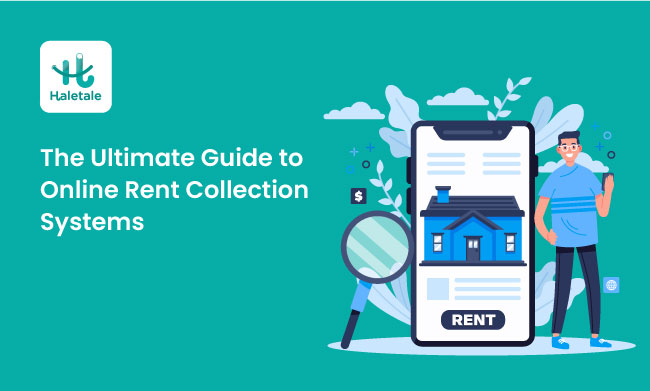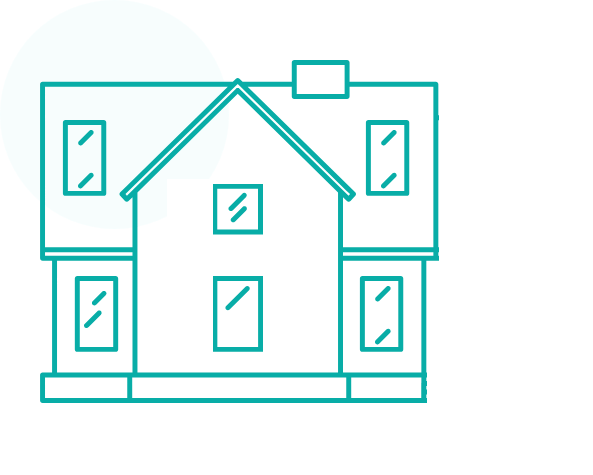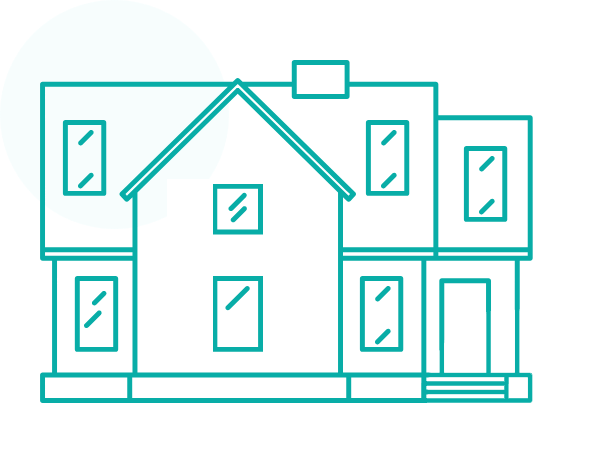Online Rent Collection Systems: Security & Setup Guide
Quick Summary
Let me cut through the noise: most property managers think online rent collection means expensive credit card fees. They’re leaving money on the table because they don’t understand the actual cost breakdown.
Bank transfers (Interac in Canada, ACH in the US) cost under $1 per transaction. Credit cards? Try $40-60 on a typical $2,000 rent payment. I’ve been working in proptech for years, and I still see landlords making this mistake constantly.
The fix is straightforward: use software that integrates with low-cost payment processors and lets you pass credit card fees to tenants who choose cards. We built Haletale specifically to solve this problem—routing Canadian payments through Zumrails (under $1 per Interac payment) and international payments through Stripe (global coverage).
Real numbers from our users: Canadian property managers save $600-800 annually per property on fees alone, get 98% on-time payment rates, and reclaim 7-11 hours every month. This guide shows you exactly how it works.
The Fee Problem Everyone Gets Wrong
I talk to property managers every week who are hesitant about online rent collection. Same concern every time: “I don’t want to lose 3% to credit card fees.”
Fair. On a $2,000 rent payment, 2.9% + $0.30 means you’re losing $58.30 per transaction. That’s $700 per year per property just… evaporating. If you manage ten units, that’s $7,000 gone.
But here’s what drives me crazy: property managers and landlords think all online payments cost this much. They don’t.
Bank transfers are basically free:
- Interac in Canada: Under $1 per transaction
- ACH in the US: Usually $0-1 per transaction
- Takes 2-5 days, but who cares at that price point?
Credit cards are the expensive ones:
- 2.9% + $0.30 (sometimes higher)
- On $2,000 rent: $58.30 gone every single time
- Instant processing, but you’re paying for that speed
The difference is $57.55 per transaction. Multiply that by 12 months and however many properties you manage. That’s real money you’re either keeping or giving away based on which payment method gets used.
When we built Haletale, this was the core problem we wanted to solve: how do we get tenants using bank transfers (cheap) while still offering credit cards as an option (for tenants who really want them)?
How We Actually Built Haletale to Fix This
Most property management platforms integrate with one payment processor—usually Stripe. Which is fine if you’ve got international properties, but if you’re managing Canadian rentals? You’re overpaying massively.
We took a different approach: dual integration based on where your properties actually are.
For Canadian properties: Zumrails
This was our secret weapon. Zumrails specializes in Canadian payment processing and charges under $1 for Interac transactions. Not 1% of the transaction—literally under one dollar total.
On that $2,000 rent payment, you pay about $0.75 instead of $58.30. That’s $690 saved per property per year. I have landlords with 20 Canadian units saving $13,800 annually just on transaction fees.
The trade-off is that Zumrails’ onboarding takes a few days for verification (they’re thorough about compliance), but once you’re in, it’s bulletproof.
For international properties: Stripe
If you’ve got properties outside Canada—US, Europe, anywhere else—Stripe is the backbone. It works in 135+ countries, has rock-solid infrastructure, and the onboarding takes hours instead of days.
Is Stripe more expensive than Zumrails for bank transfers? Yes. But you’re getting global reliability and coverage. For landlords managing properties across borders, that’s the right tool.
Why the dual approach matters:
We don’t make you choose. Haletale automatically routes Canadian payments through Zumrails and everything else through Stripe. You just see “payment received”—the system handles the optimization behind the scenes.
I’ve had landlords tell me they were using other platforms that only offered Stripe, and they were paying $40+ per Interac transaction when they could’ve been paying under $1. That’s just… bad business.
The Fee Pass-Through Feature (This Changes Everything)
Okay, this is the feature I’m most proud of. We let you pass credit card processing fees directly to tenants who choose to pay by card.
Here’s how it works in practice:
Your tenant logs into their portal to pay rent. They see two options:
Bank Transfer (Interac/ACH) – Free
Credit Card – “2.9% + $0.30 processing fee will be added”
Everything is transparent. If they want to pay $2,000 by credit card to rack up rewards points, they see the total is $2,058.30 and they make an informed choice.
Based on our user data, about 92-94% of tenants choose the free bank transfer once they see the actual numbers. The 5-8% who pick credit cards are usually points chasers and they’re fine paying the fee—it’s their call.
“But is this legal?”
I get this question constantly. In most jurisdictions, yes—as long as you’re upfront about it.
In Canada, you can pass through fees as long as they don’t exceed actual processing costs (which they won’t with our system). In the US, federal law allows credit card surcharging, though some states have specific rules. I always tell landlords: check your local regulations and put the disclosure in your lease agreements.
The key is transparency. Don’t hide it, don’t inflate it. Show exactly what the processor charges, let tenants choose, done.
Setting Up Haletale (The Actual Process)
Let me walk you through what setup actually looks like. I designed this flow myself, so I know where people get stuck.
Step 1: Initial Setup (2-3 hours total)
Create your account and you’ll connect your payment processors:
Zumrails (for Canadian properties):
- Upload business verification documents
- Enter your Canadian business number
- Add banking info for deposits
- Wait 1-3 business days for approval
Stripe (for international properties):
- Business information and tax ID
- Bank account details
- Quick identity verification
- Usually approved within a few hours
Our onboarding team walks you through each step. If you hit any snags with processor verification, we can usually help expedite it.
Step 2: Configure Your Fee Structure
This is where you protect your margins. Here’s what I recommend (and what most successful landlords on our platform do):
- Set bank transfers as free for tenants
- Enable fee pass-through for credit cards
- Make bank transfers the obvious default in the interface
- Show transparent fee info right at checkout
With this setup, tenants naturally gravitate toward free bank transfers. The ones who really want credit cards see exactly what it costs and make their choice.
Step 3: Import Properties and Invite Tenants
Upload your portfolio. If you’ve got multiple properties, use our CSV bulk import—way faster than manual entry.
Then invite your tenants. We provide email templates, but honestly, I’d write something more personal:
Subject: Switching to Online Rent Payments (Makes Life Easier)
“Hey [Tenant Name],
Starting [date], I’m moving rent collection online. This is better for both of us—you can pay from anywhere, set up autopay so you never miss a payment, and get instant receipts.
How it works:
- Bank transfer (Interac/ACH): Free
- Credit card: 2.9% + $0.30 fee if you prefer that
I’ll send you a login link and setup instructions separately. Takes about 5 minutes. Let me know if you need help.
Thanks, [Your Name]”
Keep it conversational. Explain benefits. Be transparent. Offer help. That’s it.
Step 4: Turn On Automated Workflows
Set up automatic communications so you’re not manually sending reminders:
- Rent reminders: 5 days out, then 2 days out
- Payment confirmations: Instant when payment clears
- Late notices: 1 day after due date (customize as needed)
- Failed payment alerts: Immediate if a transfer bounces
These automated messages handle about 95% of payment communication. You’re not spending evenings writing reminder emails anymore.
Getting Tenants to Actually Use It
Having great software means nothing if your tenants ignore it. Here’s what actually works (based on thousands of onboardings we’ve seen):
For new tenants:
Put it in the lease: “Rent payments must be submitted through the online portal. Bank transfer, Interac, ACH, or credit card accepted. Credit card payments include processing fees.”
During move-in, show them on your phone: “Here, let me show you—takes two minutes.” When it’s part of standard onboarding, there’s zero resistance.
For existing tenants:
Give 60 days notice, but frame it as a benefit:
“This makes your life easier. Pay from anywhere, anytime. Set up autopay and never think about rent again. Get instant receipts. And if you use bank transfer, zero fees.”
Then add an incentive: “First payment through the new system? $50 rent credit. Sign up in the first month? $25 off.”
Small incentives crush inertia. Once tenants make their first payment and see how easy it is, they’re converted.
Push autopay hard:
The biggest jump in on-time payments comes from autopay. I tell tenants:
“Set it once, forget it forever. Rent gets paid automatically. Never risk a late fee. You can disable it anytime, but 90% of tenants keep it on because it just… works.”
Our data shows 85-90% autopay adoption within six months. Once it’s enabled, on-time payments hit 98%+.
Security (And Why You’re Not Actually Handling Payment Data)
Let me address this upfront: “Is this secure? I’m nervous about payment data.”
Good news: you’re not handling payment data. That’s the whole architecture.
When a tenant adds their bank account or credit card, that info goes directly to Zumrails or Stripe through encrypted connections. Haletale never sees the actual account numbers—we just get a secure token representing that payment method.
Both processors are PCI Level 1 compliant, which is the highest security certification in the payment industry. Same security infrastructure that processes payments for Amazon, Netflix, major banks.
What this means practically:
- All transmission encrypted (256-bit SSL)
- Stored payment methods tokenized (useless if intercepted)
- Real-time fraud detection via machine learning
- Regular independent security audits
- Full financial regulation compliance
You get two-factor authentication for your account. Tenants can enable it too. Activity logs track everything.
Compare to traditional methods:
Checks literally print account numbers on them. Cash can be stolen. Manual e-transfers mean texting banking details. Online payment through proper processors is actually way more secure.
Beyond Just Payment Processing
Here’s where Haletale becomes more than a payment system—it’s the full property management platform I wish I’d had when I was managing rentals:
Financial management:
- Automated payment tracking (goodbye spreadsheets)
- Tax-ready reports at year-end
- Income/expense categorization
- Multi-property consolidated view
- QuickBooks integration
Tenant management:
- Digital leases with e-signatures
- Tenant screening and applications
- Centralized communication portal
- Document storage
Maintenance:
- Tenant request submission with photos
- Work order tracking
- Maintenance history by property
Reporting:
- Real-time dashboard (who’s paid, who hasn’t)
- Vacancy tracking
- Custom financial statements
- Easy exports for tax prep
Everything in one place. No juggling five subscriptions and trying to keep data synced.
Real Numbers from Our Users
Let me share a real case study (landlord gave permission to share anonymized data).
Property management company with 45 units across Ontario and Alberta. Before Haletale, they were bleeding money on fees and drowning in admin work.
Before:
- Payment processing fees: $1,800/month (mostly credit cards)
- Admin time: 12-15 hours/month tracking payments
- Late payment rate: 22%
- Disorganized records, nightmare tax prep
After 12 months with us:
- Payment processing fees: $65/month (Interac via Zumrails)
- Admin time: 45 minutes/month
- Late payment rate: 3%
- Autopay adoption: 87%
The math:
- Fee savings: $20,820/year
- Time savings: 13.5 hours/month = $5,670/year at $35/hour
- Better cash flow from reduced late payments
Total savings: $26,490 annually
Haletale cost: ~$4,200/year
Net benefit: $22,290/year (531% ROI)
Plus tenant satisfaction improved, lease renewals jumped from 79% to 87%, and their accountant charged $800 less because records were organized.
The property manager told me: “I calculated how much money we wasted the previous three years. I don’t want to think about it.”
Why We Built This Differently
We tested a ton of property management platforms. Most have one of these problems:
They only integrate with Stripe. Even bank transfers get processed at Stripe’s rates, which are way higher than specialized processors like Zumrails. We built dual integration specifically to fix this.
They don’t let you control fees. You absorb all credit card costs. We gave landlords granular control—pass through what you want.
They’re either cheap but limited, or comprehensive but expensive. We tried to hit the sweet spot: full-featured with the lowest transaction costs in the industry.
They have terrible UX. I’ve watched 70-year-old tenants use Haletale successfully. If you can check email, you can use our platform.
Questions I Get All The Time
“What should my tenants use to pay rent?”
The Haletale tenant portal. It’s mobile-optimized, supports free bank transfers, has one-click autopay, generates instant receipts. Way better than asking them to use Venmo or PayPal, which aren’t designed for rent and lack proper documentation.
“What’s the smartest way to pay rent?”
Bank transfer through your landlord’s system with autopay enabled. No fees, automatic so you never forget, instant confirmation, proper receipts. Credit cards only make sense if you want rewards points and don’t mind the fee.
“How much will I actually save?”
Canadian property managers typically save $600-800 per property annually on transaction fees alone. Add 7-11 hours monthly of reclaimed time (worth $2,100-3,300/year at $25/hour), plus reduced late payments. For a 10-unit portfolio, you’re looking at $8,000-11,000 in total annual value.
“Is passing fees to tenants legal?”
In most places, yes—when transparent. Canada: fee can’t exceed processing cost. US: federal law allows it for credit cards (check state rules). Put it in your lease, show it at checkout, you’re good.
“Can Haletale work across countries?”
That’s literally why we built the dual-processor system. Canadian properties route through Zumrails (cheap), international properties through Stripe (global coverage). One dashboard, consolidated reporting.
“What if a payment fails?”
We notify both parties instantly. System auto-retries after 2-3 days. If it fails again, escalating late notices go out. Tenant portal shows outstanding balance. You never manually track failed payments.
Stop Leaving Money on the Table
Look, every month you wait, you’re losing money and time.
Collecting $2,000 rent via credit cards? You’re throwing away $58 per payment. That’s $696 per property per year.
Spending 10 hours monthly on manual tracking and follow-ups? That’s 120 hours annually—worth $3,000+ of your time.
Late payment rate of 20% instead of 3%? Constant cash flow disruptions and collection headaches.
All fixable. The technology exists. Thousands of landlords already using it.
What to do:
- Sign up for Haletale (2-3 hours to get set up)
- Connect Zumrails for Canadian properties, Stripe for others
- Import properties, send tenant invitations
- Enable automated workflows, stop chasing payments
Within 60 days: 95%+ tenants paying online. Within six months: 85-90% on autopay. On-time rate hits 98%. You reclaim hours monthly. You save hundreds per property annually.
We built Haletale because I was frustrated with existing solutions. They weren’t optimizing for landlord profitability—they were optimizing for their own margins. We flipped that.
Try it free and see why property managers are switching to the platform that actually saves them $600-800 per Canadian property annually while making rent collection hands-off.
Want more insights on optimizing property management? Check out our guide on Property Management Accounting Software vs Traditional Accounting.









